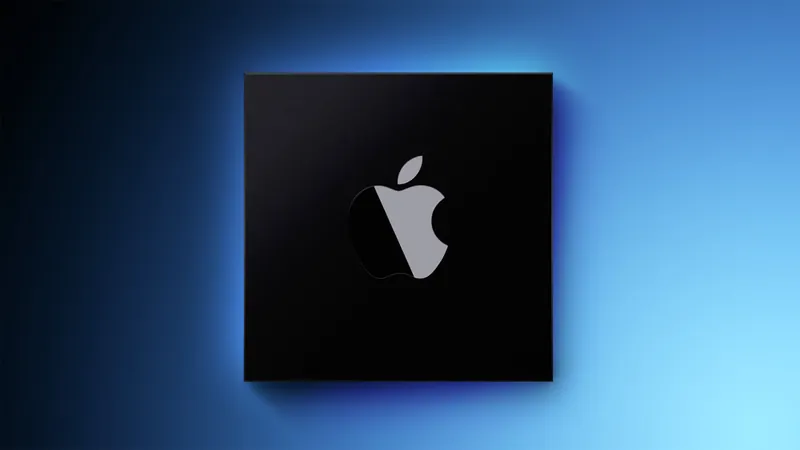
Unlocking the Secrets of Apple Silicon Unified Memory: How Much RAM Do You Really Need for Your Mac?
2024-11-05
Author: Chun
Understanding Apple Silicon Unified Memory
When it comes to selecting a new Mac, one crucial decision looms large: how much RAM should you opt for? Understanding your memory needs is essential, especially now that Apple has revolutionized the computing landscape with its silicon chips and unified memory architecture introduced in 2020.
Gone are the days when RAM was just about standalone memory lanes for the CPU and GPU. Apple's innovative approach blends these components, allowing them to tap into a single, high-bandwidth, low-latency memory reservoir. This means your data flows seamlessly within the device, avoiding the bottlenecks of traditional dual-memory systems.
This transformative architecture bestows Apple silicon machines with remarkable speed and efficiency. Tasks that once required multiple data transfers are executed more rapidly, enhancing multitasking capabilities, creative workflows, and performance in demanding applications. With macOS finely tuned to take advantage of this memory design, even 16GB of RAM—now the baseline for all Mac models—can accommodate most users more effectively than before.
Choosing the Right Level of RAM for Your Needs:
1. **16GB:** Perfect for everyday users, students, and professionals with standard tasks. Whether you are browsing, streaming, or using office productivity apps, 16GB is likely sufficient for smooth performance.
2. **24GB:** Ideal for those engaging in moderate multitasking or creative endeavors. If you’re delving into graphic design, coding, or casual video editing, this tier provides just the extra leeway needed for more intense applications without breaking the bank.
3. **32GB or 36GB:** Designed for professionals who juggle heavy creative software or engage in serious multitasking. Whether you're using advanced tools like Adobe Creative Cloud for graphics or developing complex software in Xcode, these configurations minimize reliance on disk swapping.
4. **64GB:** Tailored for power users in graphics-heavy fields or large project leads in video production, simulation, and advanced engineering tasks. This memory size supports an expansive range of applications simultaneously without a hitch.
5. **96GB:** This option caters to high-end users managing substantial datasets or engaging in intensive content creation. Ideal for professionals in video editing or detailed 3D design, it provides ample overhead for extensive multitasking and complex projects.
6. **128GB:** Aimed at specialists in film, data science, engineering, and more, this configuration is for those who handle massive projects requiring substantial amounts of memory actively. It empowers you to tackle high-resolution visual effects and sophisticated simulations without slowdown.
7. **192GB:** Recommended for enterprise-level users, researchers, and professionals working on missions that demand unparalleled memory resources. This level is critical for significant data processing tasks like machine learning and AI development.
With Apple silicon's Unified Memory Architecture and macOS's adept memory management, 16GB is becoming the sweet spot for most users today. It provides a compelling balance between cost and performance for everyday and moderate professional use. However, the landscape is evolving, and the rise of artificial intelligence – such as Apple's own developments in machine learning – means users might need to reassess their memory needs as software becomes more demanding.
If you're considering an upgrade, reflect on how well your current Mac handles your workload. Are you facing lags during resource-heavy tasks? If so, it may be worthwhile to invest in a higher memory configuration that secures your productivity today while future-proofing for tomorrow. Remember, once you purchase your Mac, upgrading RAM isn’t an option, so invest wisely for both current and future needs!


 Brasil (PT)
Brasil (PT)
 Canada (EN)
Canada (EN)
 Chile (ES)
Chile (ES)
 España (ES)
España (ES)
 France (FR)
France (FR)
 Hong Kong (EN)
Hong Kong (EN)
 Italia (IT)
Italia (IT)
 日本 (JA)
日本 (JA)
 Magyarország (HU)
Magyarország (HU)
 Norge (NO)
Norge (NO)
 Polska (PL)
Polska (PL)
 Schweiz (DE)
Schweiz (DE)
 Singapore (EN)
Singapore (EN)
 Sverige (SV)
Sverige (SV)
 Suomi (FI)
Suomi (FI)
 Türkiye (TR)
Türkiye (TR)